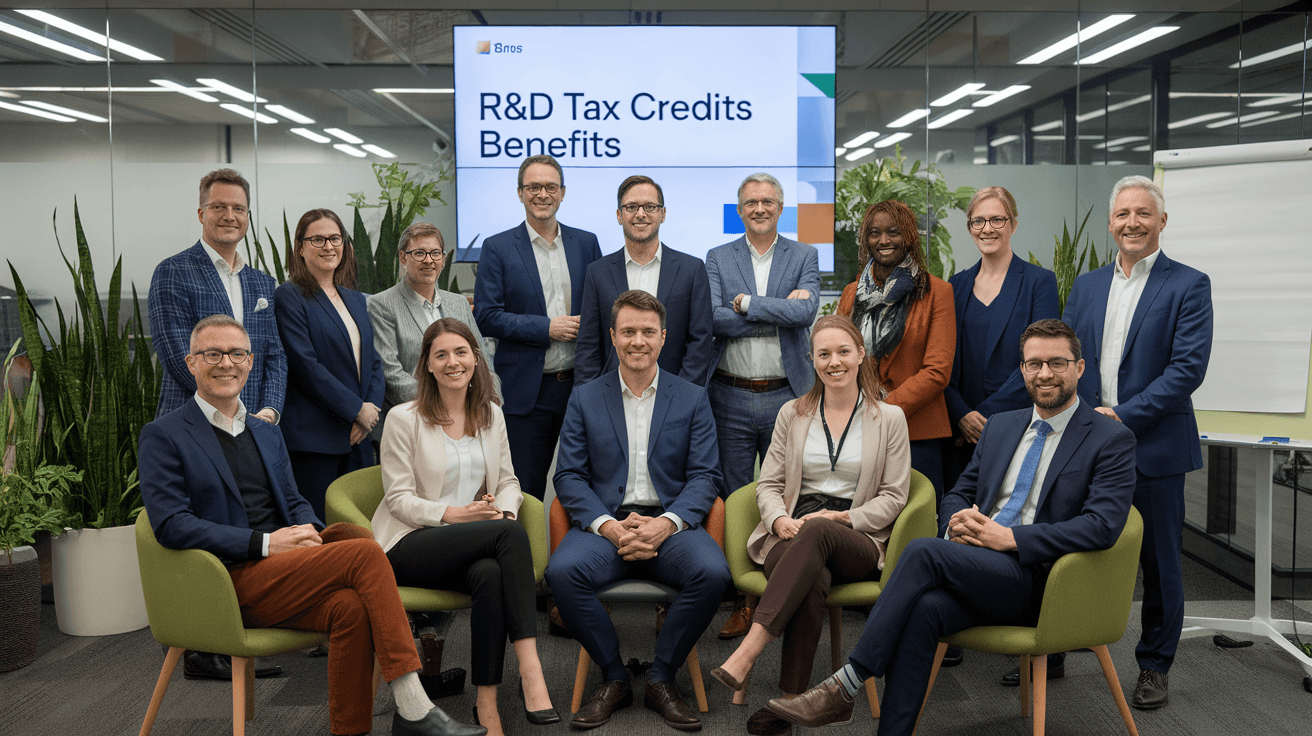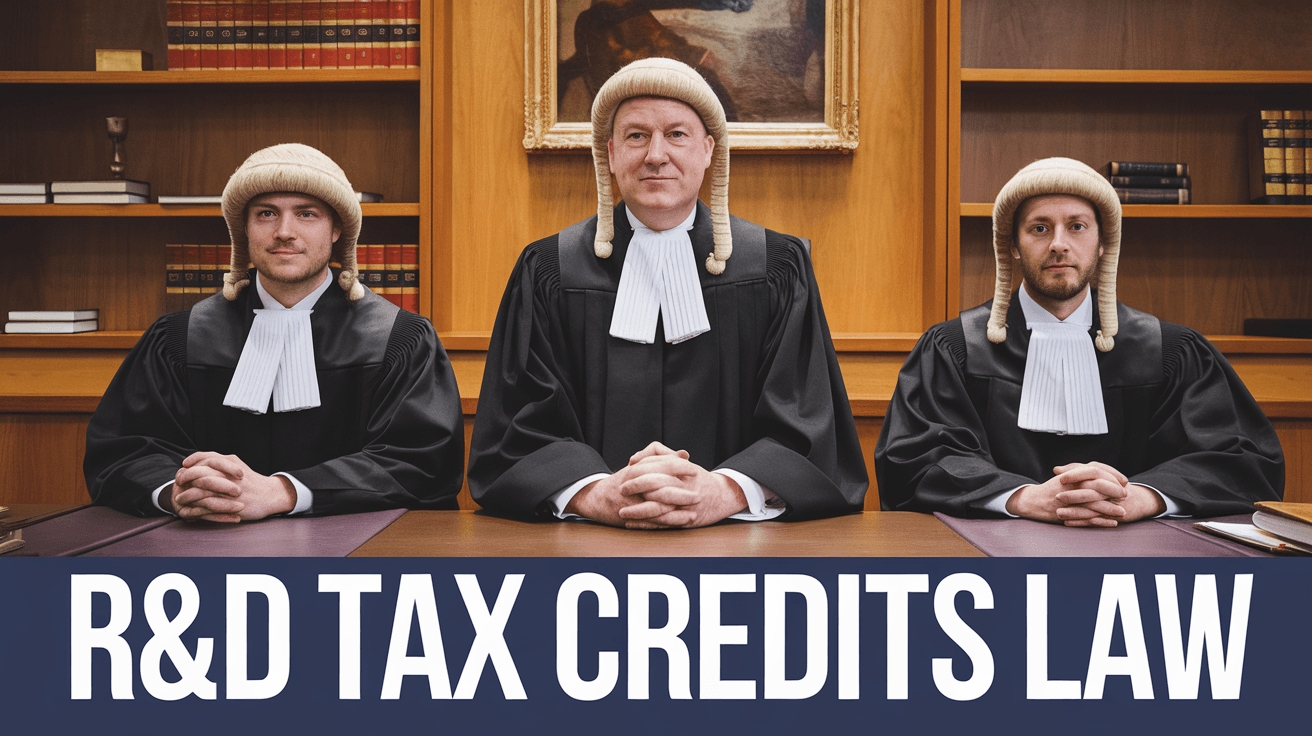R&D Tax Credits Braintree Essex
R&D Tax Credits in Braintree Essex are a government incentive designed to support local businesses in their research and development efforts. These credits can reduce your tax liability or provide a cash refund for R&D expenditures, helping you fund innovation.
To qualify for these credits, your project must involve new or improved products, processes, or services that address significant technical or scientific challenges. Accurate documentation of your activities and expenses is crucial.
By working with R&D Tax Credit Specialists, you can ensure your claim is robust and maximises the financial benefits available to your business. Their expertise in navigating the complex regulations will help you secure the support you need to innovate and grow.

How Do R&D Tax Credits Benefit Braintree Businesses?
R&D tax credits provide financial incentives for Braintree businesses to innovate. These credits can significantly reduce your tax liability and increase your cash flow, making it easier to invest in new technologies and processes.
Financial Advantages
R&D tax credits can boost your business's financial health by reducing your corporation tax. This means more money stays in your business, which you can reinvest in research and development projects. The credits are designed to be generous, so even small to medium-sized enterprises (SMEs) can benefit substantially.
Competitive Edge in Innovation
By leveraging R&D tax credits, you can gain a competitive edge in the market. These credits allow you to fund more innovative projects, which can lead to the development of new products and services. This not only helps you stay ahead of the competition but also enhances your reputation as a forward-thinking business.

Which Industries Commonly Claim R&D Tax Credits?
Technology Sector, manufacturing, life sciences, and others frequently claim R&D tax credits. These industries are known for their significant investment in innovation and development.
Technology Sector
The technology sector is a leading claimant of R&D tax credits. Companies in this industry often invest heavily in software development, artificial intelligence, and data analytics, making them prime candidates for these incentives.
Manufacturing
Manufacturing firms are also common claimants, particularly those involved in advanced technologies and automation. These companies often undertake extensive research to improve production processes and develop new materials.
Life Sciences
In the life sciences sector, R&D tax credits are crucial for companies working on pharmaceuticals, biotechnology, and medical devices. The high costs of clinical trials and product development make these credits especially valuable.
Others
Other industries, such as renewable energy and construction, also benefit from R&D tax credits. These sectors often engage in innovative projects that push the boundaries of technology and sustainability.

What Qualifies as R&D Under UK Tax Law?
R&D under UK tax law refers to activities that seek to achieve an advance in science or technology through the resolution of scientific or technological uncertainty. To qualify, the work must not just be routine, but must involve genuine innovation and experimentation.
Qualifying Activities
Research and Development (R&D) includes projects aimed at creating new products, processes, or services, or improving existing ones. For instance, developing new software, enhancing manufacturing processes, or creating innovative medical devices all qualify. If your project involves substantial scientific or technical challenges and is not a simple extension of existing knowledge, it likely qualifies.
Excluded Activities
Certain activities are explicitly excluded from qualifying as R&D under UK tax law. Examples include market research, management studies, and quality control. Routine data collection and analysis, as well as the creation of artistic or literary works, also do not qualify. It’s important to distinguish between activities that involve genuine innovation and those that are part of standard business operations.
When in doubt, consult with a tax advisor to ensure your activities align with the criteria set by HMRC.

How Are R&D Tax Credits Calculated?
R&D tax credits are calculated based on the eligible costs you incur during your research and development activities. These costs typically include staff salaries, materials, and certain external expenses.
SME Scheme
Under the SME Scheme, you can claim up to 130% of your eligible R&D costs. This means if you spend £100,000 on R&D, you can claim £130,000, which can significantly reduce your corporation tax liability. The SME Scheme is designed to support smaller businesses with fewer than 500 employees and a turnover or balance sheet of less than £100 million.
RDEC Scheme
For larger companies, the RDEC Scheme (Research and Development Expenditure Credit) applies, you can claim a credit of 13% of your eligible R&D costs. This credit can be offset against your corporation tax liability or, if your company is loss-making, you can receive a cash payment from HMRC. The RDEC Scheme is more complex and is intended for companies with over 500 employees or a turnover exceeding £100 million.

Recent Changes to UK R&D Tax Credits
The UK Government has introduced several updates to the R&D Tax Credits scheme, reflecting the ongoing commitment to support innovation and research in the country. These changes aim to make the scheme more accessible and beneficial for businesses.
Policy Updates
- Increased Relief for SMEs: The SME relief rate has been raised, providing more financial support for smaller companies.
- New Digital Technologies Focus: The scheme now places a stronger emphasis on digital technologies, encouraging investment in this area.
- Simplified Application Process: The application process has been streamlined to reduce the administrative burden on businesses.
These updates are designed to ensure that the scheme remains relevant and supportive of the evolving needs of businesses in the UK.
Impact on Businesses
The changes to the R&D Tax Credits scheme are expected to have a positive impact on businesses, particularly SMEs. By increasing the relief rate and simplifying the application process, more companies will be able to access the financial support they need to drive innovation and growth. This should lead to increased investment in R&D activities, fostering a more dynamic and competitive business environment in the UK.

How Can Braintree Businesses Apply for R&D Tax Credits?
Braintree businesses can apply for R&D tax credits by following a structured process and submitting the necessary documentation. The application process is designed to help you claim the credits you are entitled to, ensuring you benefit from the UK government's support for innovation.
Application Process
To apply for R&D tax credits, you need to follow these steps:
- Register with HMRC: Start by registering with HMRC if you haven’t already. This involves providing your company details and confirming your eligibility for the scheme.
- Determine Eligible Projects: Identify which projects within your business qualify for R&D tax credits. Projects must involve a significant advancement in science or technology.
- Calculate Your Costs: Gather and calculate all qualifying R&D costs, including staff wages, materials, and subcontracted work.
- Prepare a Technical Narrative: Write a detailed technical narrative explaining the nature of your R&D activities and how they meet the eligibility criteria.
- Submit Your Claim: Complete and submit the R&D tax credit claim form to HMRC. Ensure all required documentation is included to avoid delays.
Required Documentation
When applying for R&D tax credits, you will need to provide several key documents:
- Company Registration Details: Your company’s name, HMRC reference number, and other registration details.
- Financial Statements: Recent financial statements to support your claim, including profit and loss accounts and balance sheets.
- Technical Narrative: A detailed document outlining your R&D activities, the challenges you faced, and the advancements you achieved.
- Cost Breakdown: A breakdown of all eligible R&D costs, including wages, materials, and subcontracted work.
By following these steps and providing the necessary documentation, you can successfully apply for R&D tax credits and benefit from the financial support available to Braintree businesses.

Title: Common Pitfalls to Avoid When Claiming R&D Tax Credits
When claiming R&D tax credits, it is crucial to avoid certain mistakes that can lead to rejections or audits. Here are the key pitfalls to watch out for:
Overclaiming
Overclaiming occurs when you include ineligible costs or exaggerate the scope of your R&D activities. This can result in your claim being rejected or subject to a lengthy and costly investigation. Always ensure that the costs and activities you include in your claim are genuinely related to R&D and are supported by clear evidence.
Underclaiming
Underclaiming happens when you fail to include all eligible R&D activities and costs, resulting in a smaller credit than you are entitled to. This can happen due to a lack of awareness of what qualifies as R&D or fear of overclaiming. Review the HMRC guidelines thoroughly to ensure you are not leaving any eligible expenses out of your claim.
Documentation Errors
Documentation errors can derail your claim if you do not have the necessary evidence to support your R&D activities. This includes inaccurate records, missing invoices, or lack of detailed project descriptions. Keep meticulous records of all R&D activities, costs, and outcomes to prevent any discrepancies in your claim.

How Can Professional Advice Enhance R&D Tax Credits Claims?
Professional advice significantly improves the accuracy and comprehensiveness of R&D Tax Credits claims. By leveraging the expertise of tax credit specialists, you can ensure that every eligible aspect of your R&D activities is considered and properly documented.
Role of Tax Credit Specialists
- Identifying Eligible Activities: Tax credit specialists can help you identify and document all aspects of your R&D activities that qualify for tax credits.
- Maximising Claim Value: They ensure that you claim the maximum allowable amount, often uncovering areas you might have overlooked.
- Navigating Complex Regulations: Specialists are well-versed in the complex and ever-changing tax regulations, ensuring your claim is fully compliant with HMRC guidelines.
- Reducing Audit Risk: Professional advice can help minimise the risk of audits by ensuring your claim is robust and well-supported with the necessary evidence.
The benefits of expert guidance extend beyond just financial gains. Expert advice ensures that your company can focus on innovation and growth, knowing that the tax credit claim process is handled efficiently and effectively.
In Conclusion
R&D Tax Credits in Braintree Essex are a valuable government incentive designed to support innovation and development within local businesses. By reducing your tax liability or providing a cash refund, these credits can significantly boost your company's financial health and enable you to invest more in research and development.
Understanding and accurately claiming these credits can give your business a competitive edge, allowing you to fund more innovative projects and stay ahead in the market. To ensure you maximise the benefits, consider consulting with R&D Tax Credit Specialists. They can help you navigate the complex application process and ensure your claim is robust and well-supported.
If you’re ready to unlock the full potential of R&D Tax Credits for your business, contact R&D Tax Credit Specialists today to get started.

